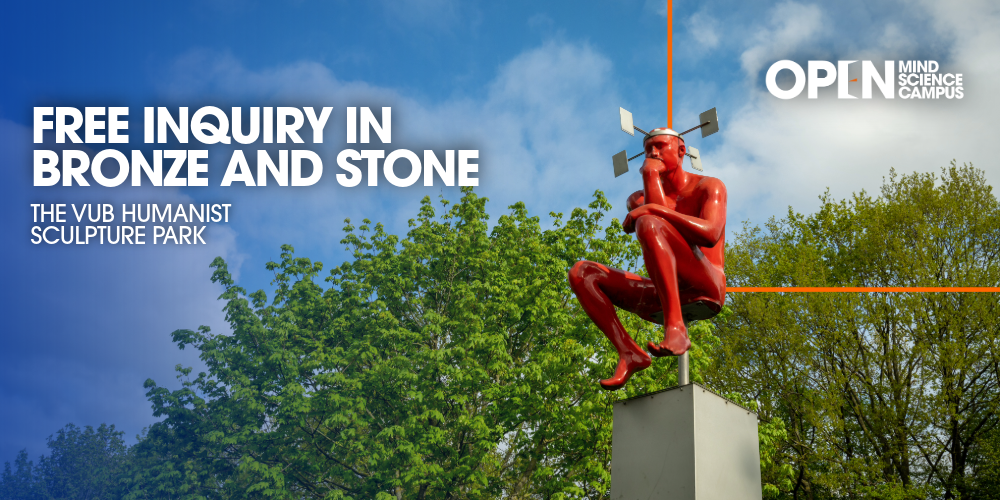
Those entering the campus of the Vrije Universiteit Brussel (VUB) via Pleinlaan may not notice it immediately. But between the concrete-grey buildings and green lawns lies one of Brussels' most remarkable open-air museums: the Humanist Sculpture Park. Since 1980, it has grown into a collection of fourteen permanent sculptures, scattered across the campus, each with a distinct liberal-humanist message.
The origins of the park date back to the early years of the VUB. After the split from the ULB in 1969, the campus in Etterbeek was built on a former military training ground. The infrastructure was functional but visually austere. In 1980, the Alumni Association donated the first sculpture to the university, laying the foundation for a collection that has since steadily grown into an open-air museum with a philosophical mission. Under the leadership of emeritus professor Willem Elias, a collection was compiled of works that are not only artistically relevant, but also convey a distinct humanist message.
The sculptures are freely accessible and form part of the Living Campus Walk, a green walk through the campus nature and artworks. The open-air setting makes every encounter with a sculpture unique: light, seasons and perspective constantly change the experience.
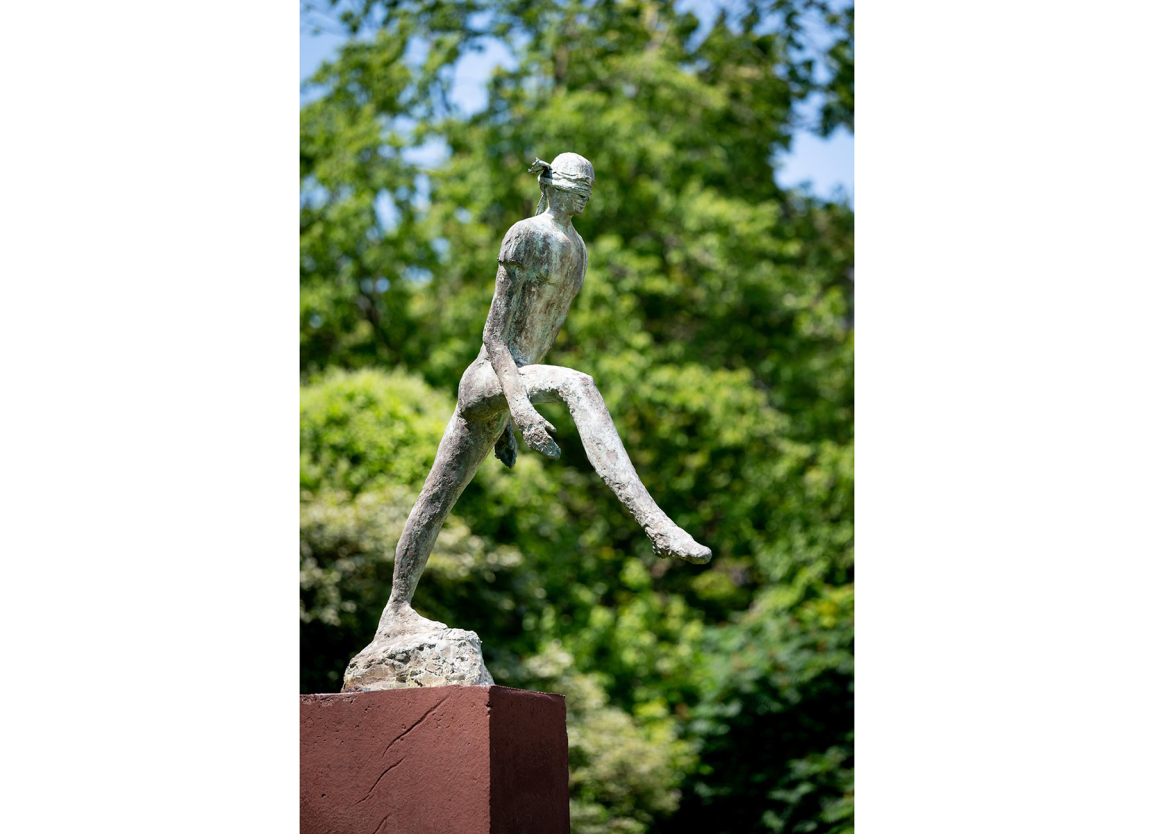
The Step (2001)
One of the most striking works is "The Step" by Jean Bilquin (2001). It depicts a blindfolded figure taking a step forward – a metaphor for the leap into the unknown that every student takes at the beginning of their academic journey. The statue is honoured annually during the Sint-Verhaegen celebration, a tradition at the heart of the VUB's liberal identity.
Thinker in all states (2006)
A little further on is Willy Vandendorpe's “Denker in alle staten” (Thinker in all states, 2006), a variation on Rodin's famous thinker. It symbolises the principles of the VUB. A weather vane adorns the head, representing the influenceability of rational thinking. The work raises questions about the limits of free research and the role of external influences in scientific processes.
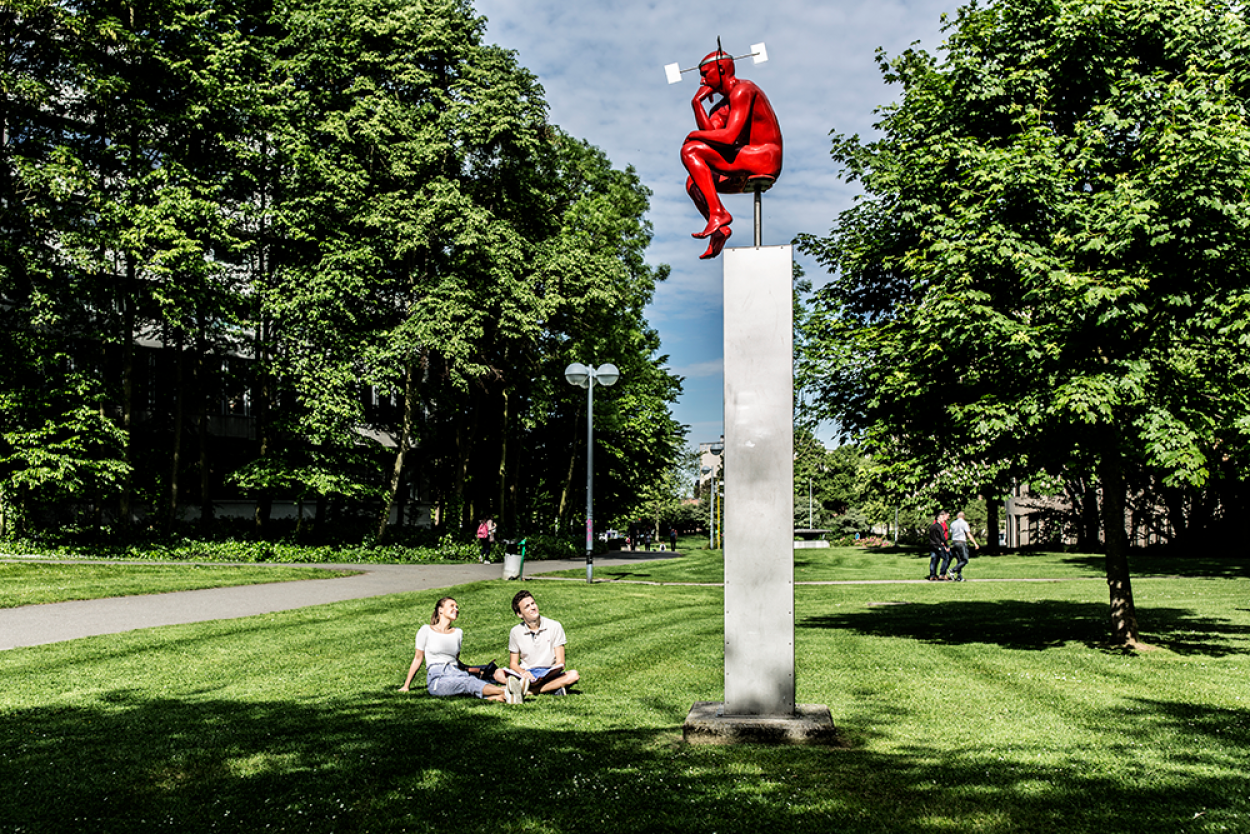
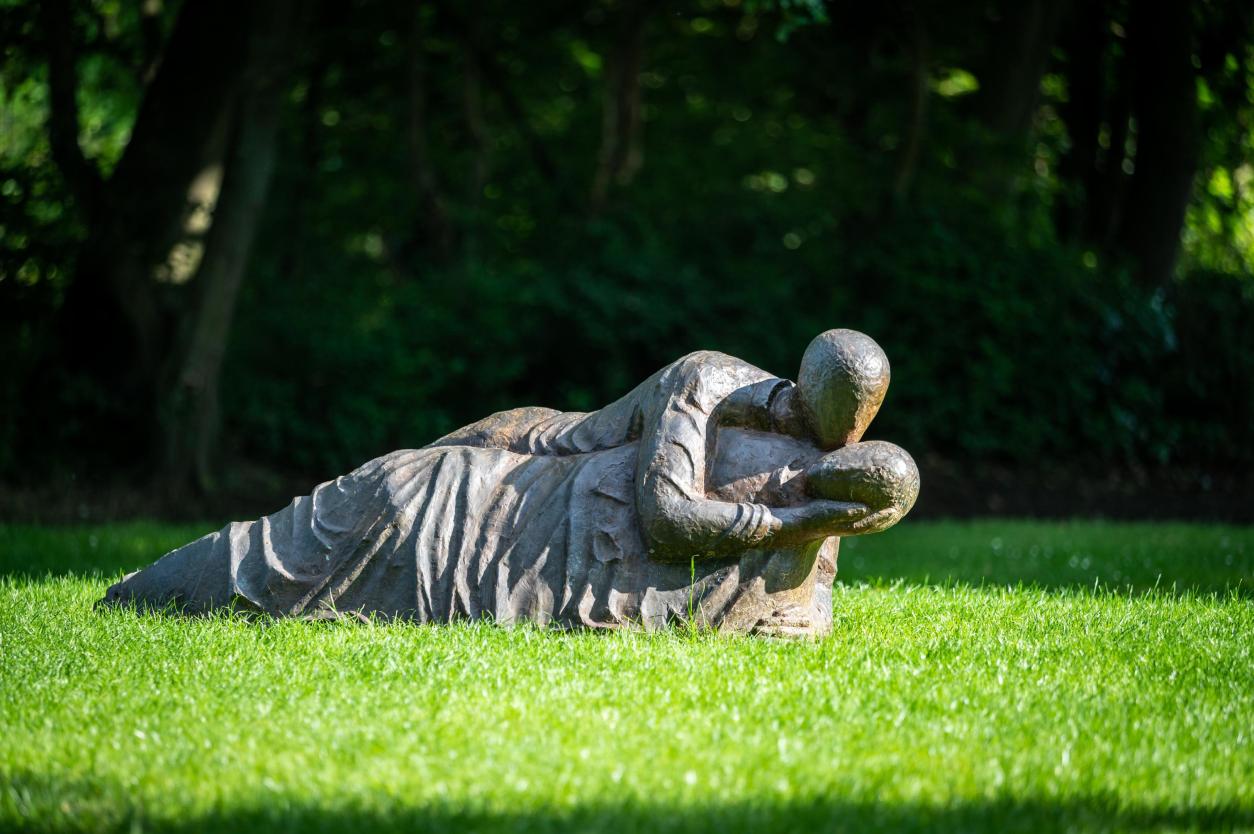
Monument of Comfort (2009)
"Monument of Comfort" by Philip Aguirre y Otegui (2009) was inspired by a newspaper photo of a police officer covering a washed-up refugee with his coat. The statue evokes compassion and is the setting for an annual minute's silence in memory of those who have died from the VUB community. It is a bronze statement about humanity in times of crisis.
Eros/Eroos (2014 - 2019)
A more recent work is “Eros/Eroos” by Johan Tahon (2014–2019), a monumental figure with organic forms that expresses love and physicality. The sculpture invites touch and encounter, and aims to spread positive energy across the campus.
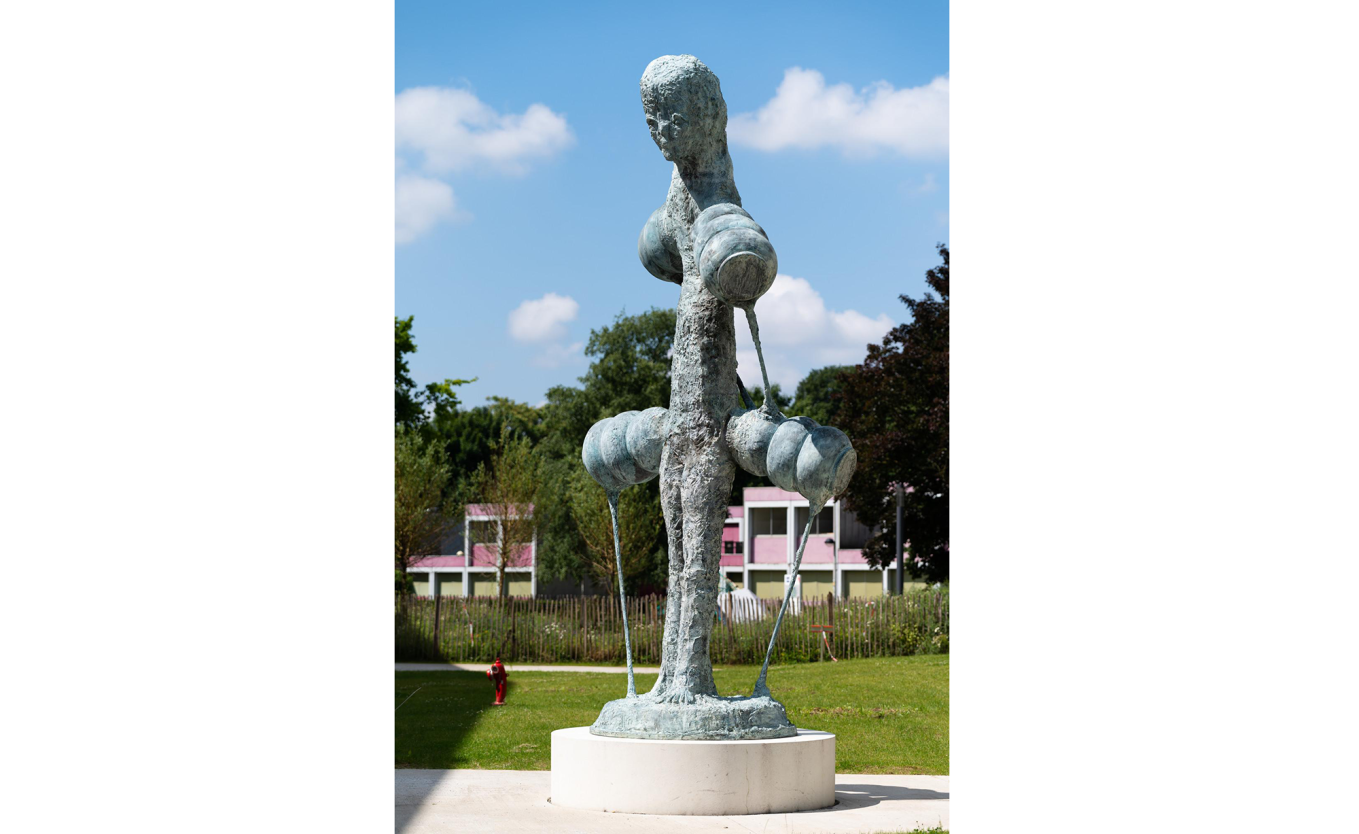

Braemgebouw (de moedersculptuur)
In 2024, the book Vrijzinnige Beelden (Liberal Images) was published by deMens.nu and the VUB, capturing the park and its philosophy in words and images. The book includes contributions from Professor Free De Backer, among others, who emphasises that art on campus helps students to perceive better and train their senses within their theoretical frameworks.
The book also discusses the iconic Braem building, designed by Renaat Braem as a “Temple of Science”. According to the authors, the building itself is the “mother sculpture” of the park – an architectural representation of free inquiry.
The Humanist Sculpture Park is not a static collection, but a living landscape of ideas. At a time when universities are under increasing pressure to deliver efficiency and returns, this park reminds us of the value of slowness, wonder and free thinking.
Those who walk through the park walk not only among sculptures, but among values. It is a place where art and science meet – and where people take centre stage.
A peek inside the labs of VUB scientists?
Join us on 23 September 2025 for the Academic Opening and explore the renewed VUB laboratories
On 23 September, VUB will not only open the new academic year but also the doors of its laboratories. Discover live the technological innovations and scientific breakthroughs our researchers are working on – the very ones that could soon make the headlines.